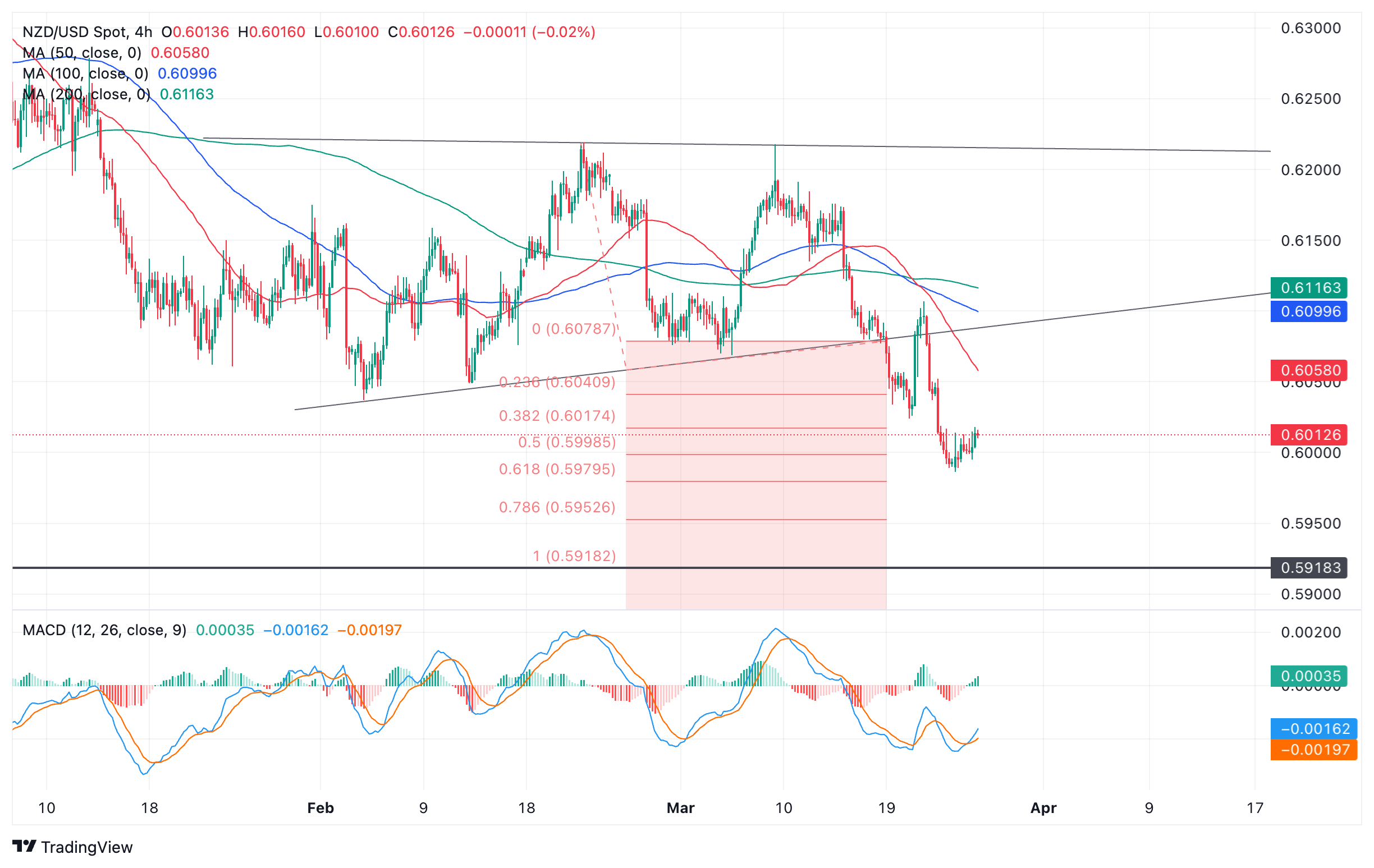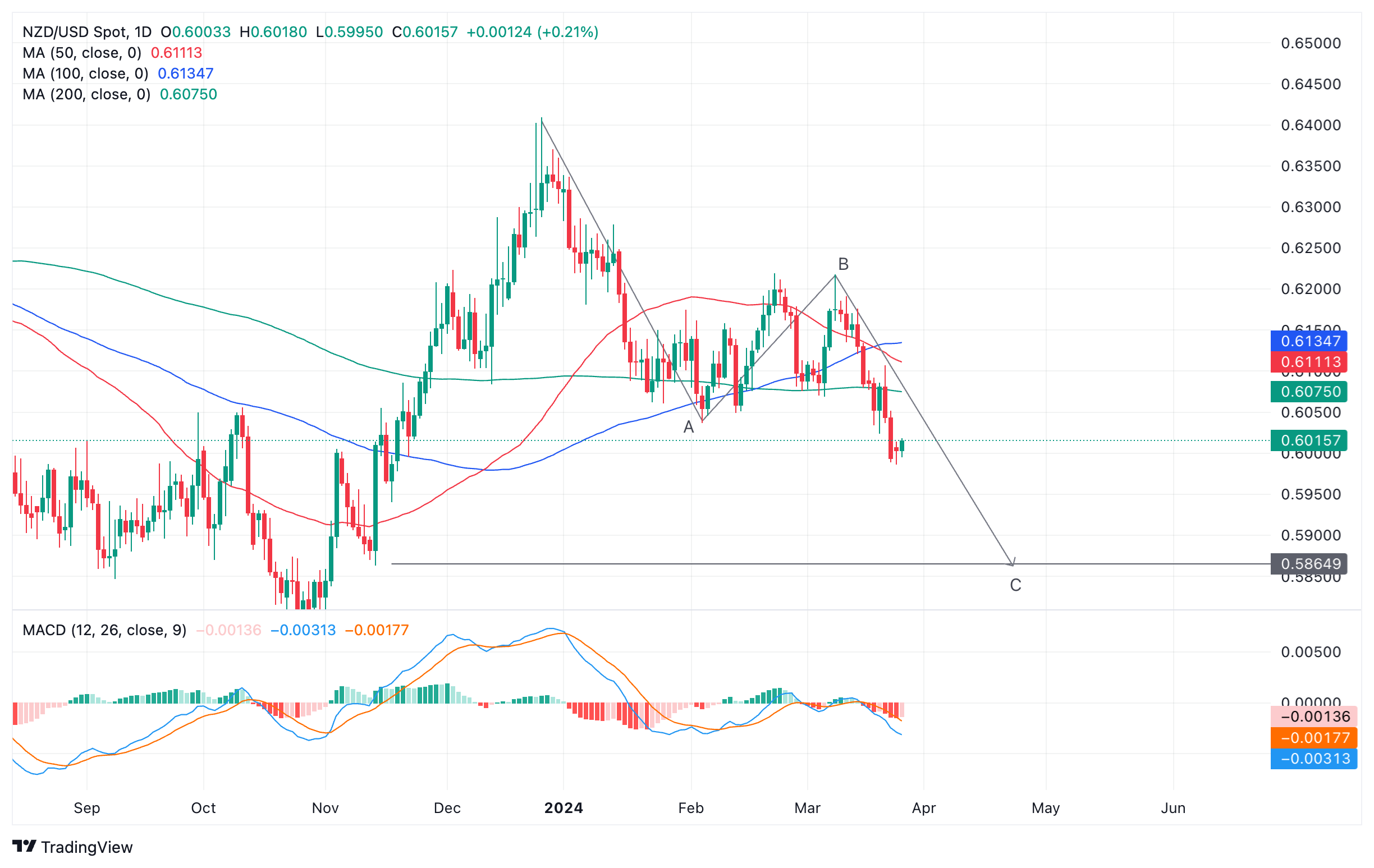- The New Zealand dollar rises due to the tone of risk appetite in the markets.
- Risk assets rise on hopes that central banks will cut interest rates.
- However, the RBNZ has not committed to cutting rates as inflation remains high despite slow growth.
The New Zealand Dollar (NZD) moves higher across its most traded peers on Tuesday as markets take a positive tone toward risk, benefiting commodity currencies like the New Zealand Dollar versus traditional safe-haven assets. sure.
European stock markets are mostly rising on the hope that the European Central Bank (ECB) will not take long to cut interest rates, thus making credit cheaper.
The German DAX, the British FTSE 100, the Italian IT40 and the Spanish IBEX all post gains, with only the French CAC40 declining, after data showed a 5.5% budget deficit in France in 2023, higher than expected, according to data from the INSEE statistics office.
New Zealand dollar suffers from negative fundamentals
Despite this recent rally, the New Zealand Dollar is under pressure from bearish fundamentals.
Recent data showed that the New Zealand economy fell into a technical recession in the fourth quarter of 2024, while headline inflation remained relatively high at 4.7% during the same reporting period, although it fell from 5.6% recorded in the third quarter .
Despite weak growth, the Reserve Bank of New Zealand (RBNZ) is not considering cutting interest rates due to high inflation. The high price growth is partly due to structural problems, such as the rigidity of the labor market, which in turn keeps wage inflation high.
In a monetary policy speech at a Chartered Accountants event on Tuesday, RBNZ chief economist Paul Conway reiterated the bank's central message that interest rates would need to remain high for some time to reduce inflation.
“Interest rates need to remain at a restrictive level for a sustained period of time to meet our inflation target,” the speech notes said, repeating the RBNZ's official line.
Technical Analysis: New Zealand Dollar Retraces Downtrend
The NZD/USD pair continues to retreat within a short-term downtrend.
The pair recently broke out of a wedge pattern and is expected to continue falling until it reaches the conservative target of the pattern.
NZD/USD 4-hour chart
According to the theory of technical analysis, the target is at a distance equivalent to the height of the wedge extrapolated downwards. In the case of NZD/USD it suggests further declines to a conservative target at 0.5964, the 0.618 Fibonacci ratio of the pattern height extrapolated from the downward breakout point. The full ratio (1.000) provides an additional target at 0.5892.
NZD/USD daily chart
Adding to the bearish outlook is the possible formation of an ABC pattern or a movement measured on the daily chart.
If so, NZD/USD could be developing into the last wave C of the pattern, which could extend to a long-term target at 0.5864, where wave C equals wave A.
Only a break above the March 21 high of 0.6107 would call the downtrend into question.
New Zealand Dollar FAQ
What factors determine the price of the New Zealand Dollar?
The New Zealand Dollar (NZD), also known as the Kiwi, is a well-known currency among investors. Its value is largely determined by the health of the New Zealand economy and the policy of the country's central bank. However, there are some peculiarities that can also cause the NZD to move. The evolution of the Chinese economy tends to move the Kiwi because China is New Zealand's largest trading partner. The bad news for the Chinese economy will likely mean fewer New Zealand exports to the country, which will affect the economy and therefore its currency. Another factor moving the NZD is dairy product prices, as the dairy industry is New Zealand's main export. High dairy prices boost export earnings, contributing positively to the economy and therefore the NZD.
How do RBNZ decisions affect the New Zealand Dollar?
The Reserve Bank of New Zealand (RBNZ) aims to achieve and maintain an inflation rate of between 1% and 3% over the medium term, with the aim of keeping it close to the midpoint of 2%. To do this, the bank sets an appropriate level of interest rates. When inflation is too high, the RBNZ raises interest rates to cool the economy, but the move will also drive up bond yields, making investors more attractive to invest in the country and thus boosting the NZD. On the contrary, lower interest rates tend to weaken the NZD. The so-called rate differential, or what rates in New Zealand are or are expected to be compared to those set by the US Federal Reserve, can also play a key role in the movement of the NZD/USD pair.
How does economic data influence the value of the New Zealand Dollar?
The release of macroeconomic data in New Zealand is key to assessing the state of the economy and can influence the valuation of the New Zealand Dollar (NZD). A strong economy, based on high economic growth, low unemployment and high confidence is good for the NZD. High economic growth attracts foreign investment and may encourage the Reserve Bank of New Zealand to raise interest rates if this economic strength is accompanied by high inflation. Conversely, if economic data is weak, the NZD is likely to depreciate.
How does overall risk sentiment affect the New Zealand Dollar?
The New Zealand Dollar (NZD) tends to strengthen during periods of risk appetite, or when investors perceive overall market risks to be low and are optimistic about growth. This usually translates into a more favorable outlook for commodities and so-called “commodity currencies” such as the kiwi. Conversely, the NZD tends to weaken during times of market turmoil or economic uncertainty, as investors tend to sell riskier assets and flee to more stable havens.
Source: Fx Street
I am Joshua Winder, a senior-level journalist and editor at World Stock Market. I specialize in covering news related to the stock market and economic trends. With more than 8 years of experience in this field, I have become an expert in financial reporting.









